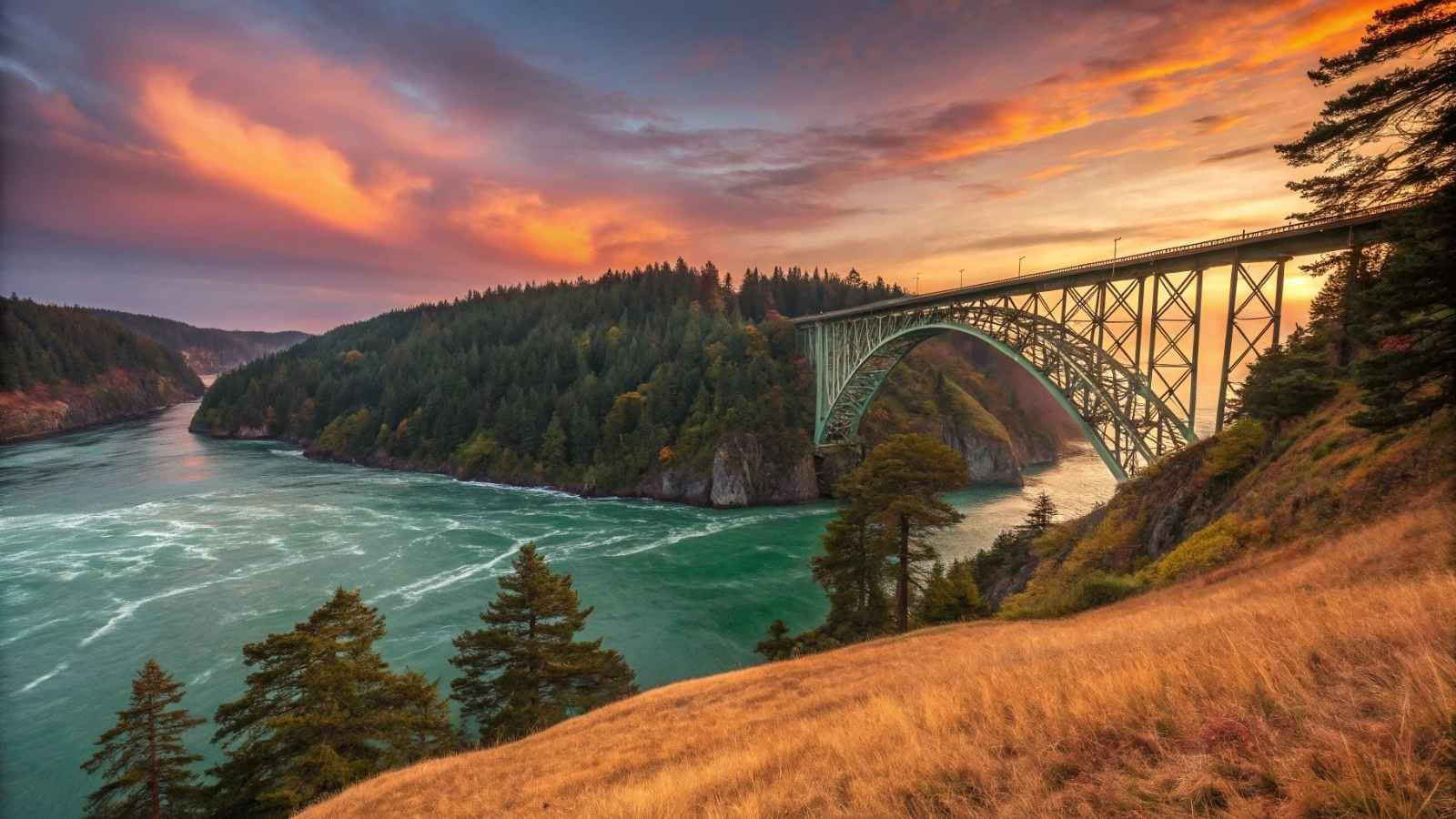
Salt in the air, sun on your skin, and the kind of quiet that makes the world feel a little lighter—America is home to islands that capture this rare sense of paradise, yet many travelers never set foot on them.
Tucked beyond the usual beach crowds are stretches of sand where wild horses roam, waters that glow after dark, and coastal towns where life moves at a slower, more human pace.
These places don’t just look beautiful; they carry a soul-deep calm that lingers long after you’ve left. Ready to uncover the islands that truly feel like hidden treasure?
1. Culebra, Puerto Rico
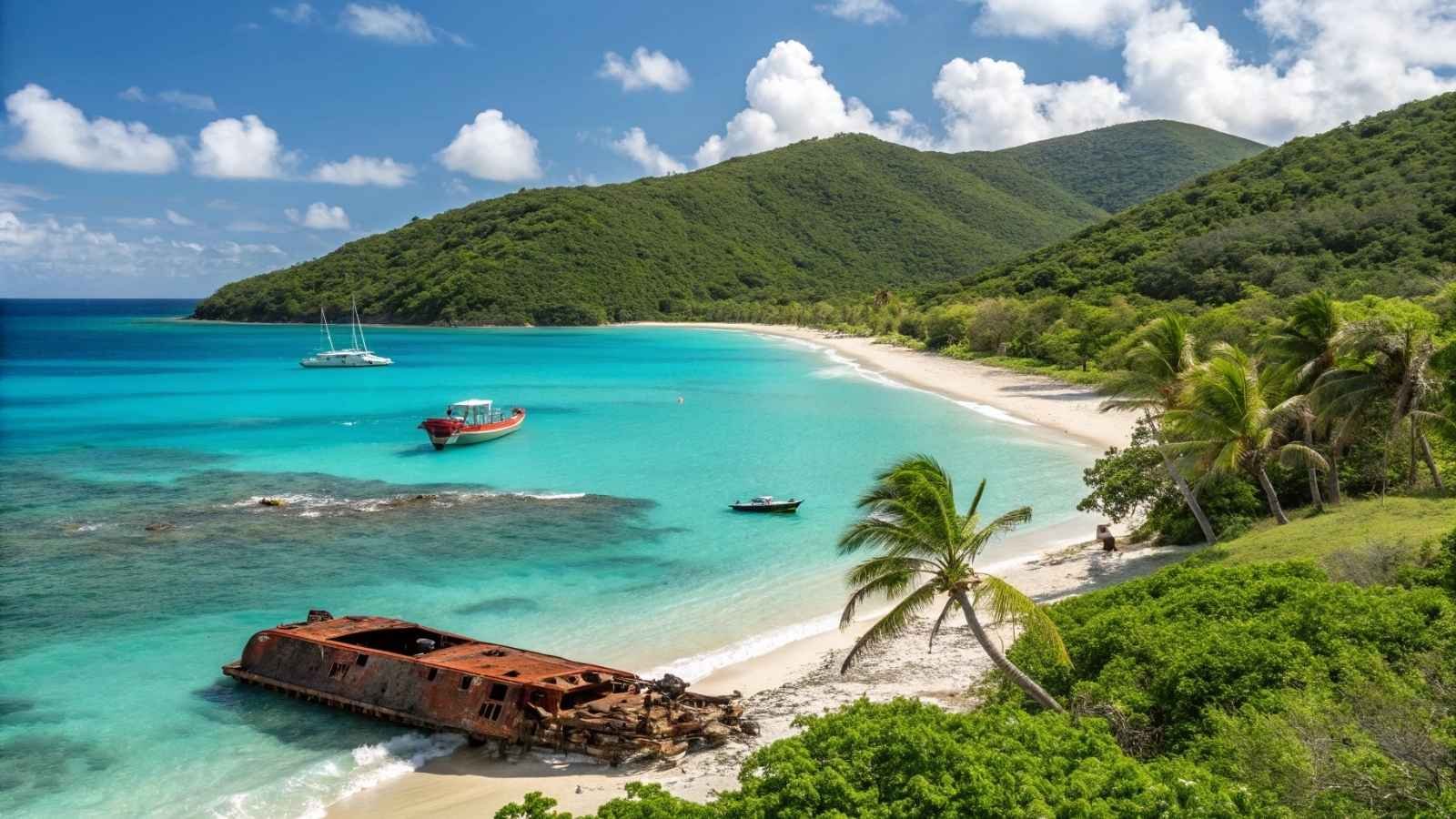
Culebra is one of those places where life slows down the moment you step off the ferry. This small island is best known for Flamenco Beach, often ranked among the most beautiful beaches in the world. The sand is soft and white, the water impossibly turquoise, and the waves gentle enough for a relaxing swim. It feels far removed from the crowded resorts of mainland Puerto Rico, offering a quieter, more unspoiled vibe.
What makes Culebra so special is its laid-back authenticity. There are no towering hotels or heavy tourist footprints here. Instead, you’ll find small guesthouses, mom-and-pop restaurants, and plenty of chances to chat with locals over fresh seafood. For those who love snorkeling, the reefs around Culebra are teeming with marine life—colorful fish, turtles, and even manta rays glide through these waters.
One of the best parts of Culebra is that it’s the perfect place to truly disconnect. There are only a few main roads, and much of the island remains undeveloped. For travelers looking for that untouched Caribbean escape without leaving U.S. territory, this is as close as it gets.
- Best months to visit: December to April (dry season, great weather)
- Getting there: Ferry from Ceiba or a short flight from San Juan
- Top activities: Snorkeling at Tamarindo Beach, kayaking to uninhabited cays, lounging at Flamenco Beach
- Good to know: Limited accommodations, so book early
2. San Juan Islands, Washington
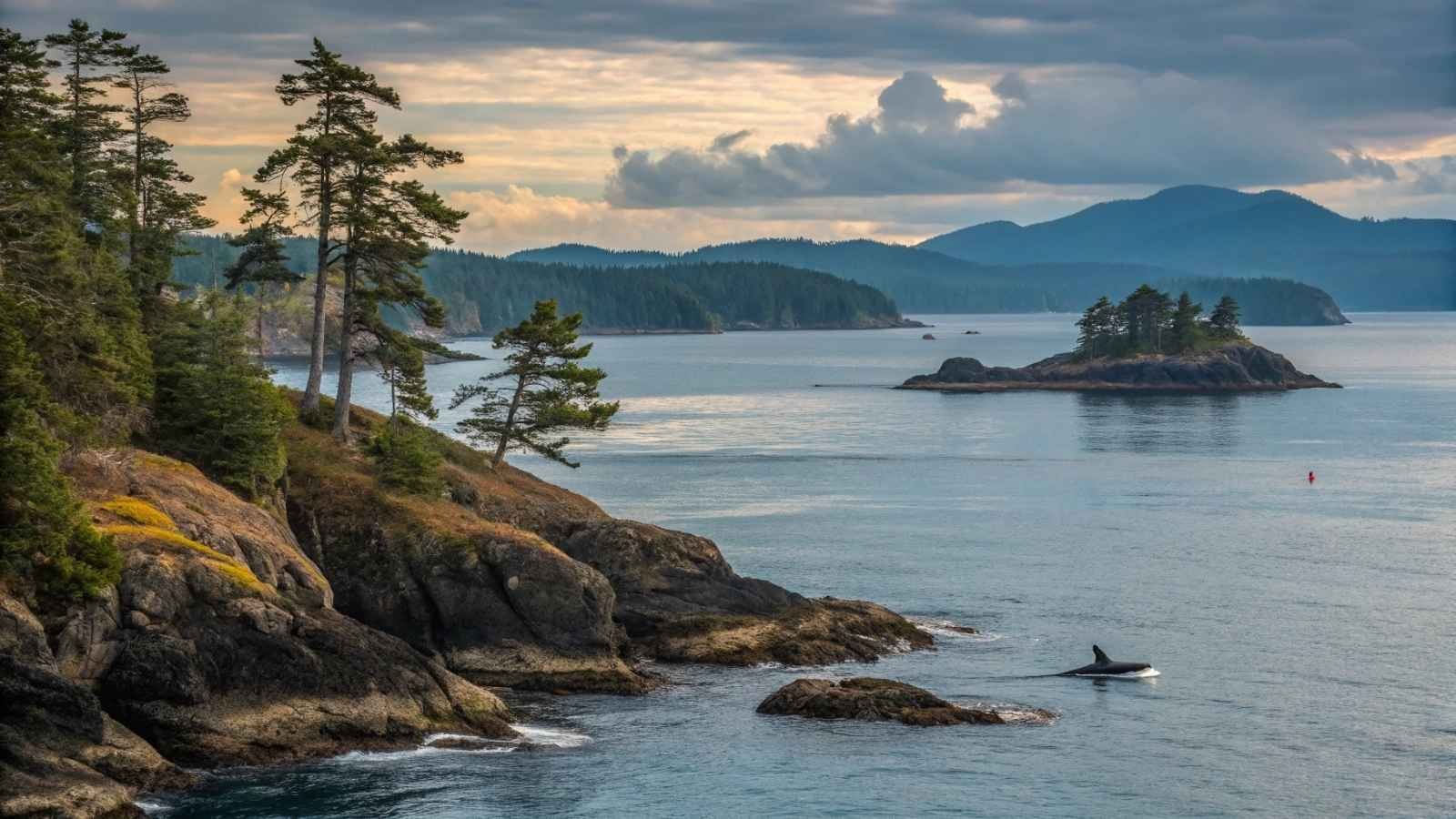
Just a short ferry ride from mainland Washington, the San Juan Islands feel like a completely different world. Think rocky coastlines, emerald forests, and endless ocean views. The star here is the abundance of wildlife—you have a real chance of spotting orcas, bald eagles, seals, and even humpback whales. It’s the kind of place where mornings begin with misty skies and evenings end with golden sunsets over calm waters.
The islands aren’t about flashy resorts; they’re about slowing down and savoring nature. Orcas Island, one of the largest, is home to Moran State Park, where you can hike through old-growth forests up to Mount Constitution for panoramic views. Meanwhile, Friday Harbor on San Juan Island has charming shops, waterfront restaurants, and cozy inns that make the whole experience feel welcoming and warm.
For travelers who enjoy both adventure and downtime, the San Juans are a perfect mix. One day might be kayaking alongside seals, the next could be cycling through quiet country roads lined with lavender farms. It’s this balance of activity and serenity that keeps people returning year after year.
- Best months to visit: June to September (warmer, drier weather, whale-watching season)
- Getting there: Ferry from Anacortes, or small plane from Seattle
- Top activities: Whale-watching tours, hiking in Moran State Park, kayaking, exploring Friday Harbor
- Good to know: Summers are busiest; book ferries and lodging ahead
3. Dry Tortugas, Florida
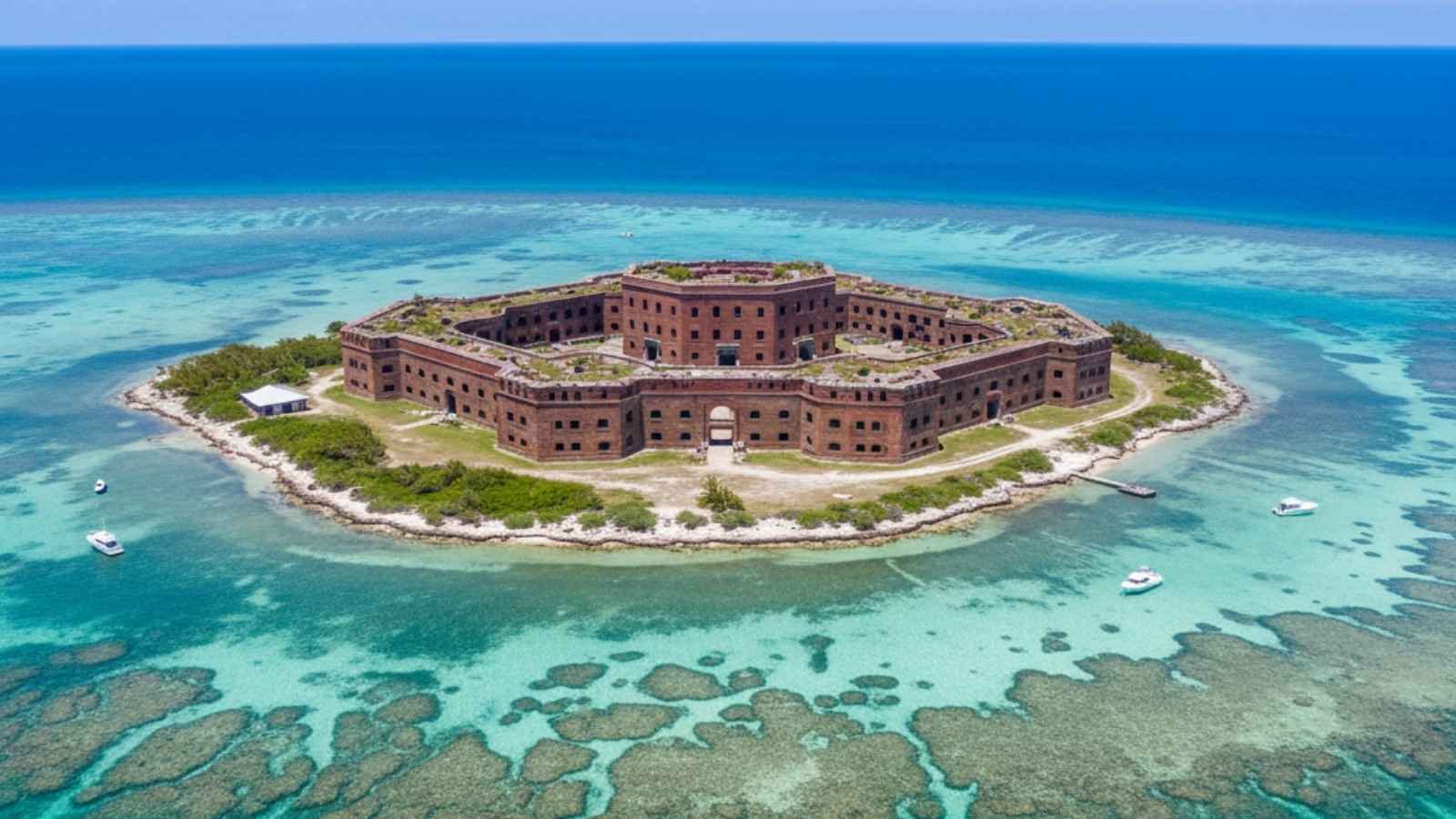
Seventy miles west of Key West lies the Dry Tortugas, a remote cluster of islands that feels like stepping into another era. Accessible only by boat or seaplane, this national park is famous for Fort Jefferson, an enormous 19th-century coastal fortress that still stands in striking contrast against the turquoise waters. The setting feels almost surreal—historic brick walls surrounded by nothing but endless ocean.
But history is only part of the appeal. The Dry Tortugas are a snorkeler’s dream, with some of the clearest waters in the Florida Keys. Coral reefs and shipwrecks provide shelter for vibrant marine life, from angelfish to barracuda. Even beginners will feel comfortable snorkeling here because of the calm, shallow waters surrounding the islands.
The biggest draw, though, is the sense of isolation and tranquility. With no hotels or restaurants, visitors bring their own supplies and spend the day exploring. Camping is allowed for the truly adventurous, and waking up to the sunrise over the Gulf of Mexico is an experience that feels straight out of paradise.
- Best months to visit: November to April (cooler, drier, fewer storms)
- Getting there: Ferry or seaplane from Key West
- Top activities: Snorkeling, exploring Fort Jefferson, birdwatching, camping
- Good to know: No amenities—bring everything you need
4. Santa Catalina Island, California
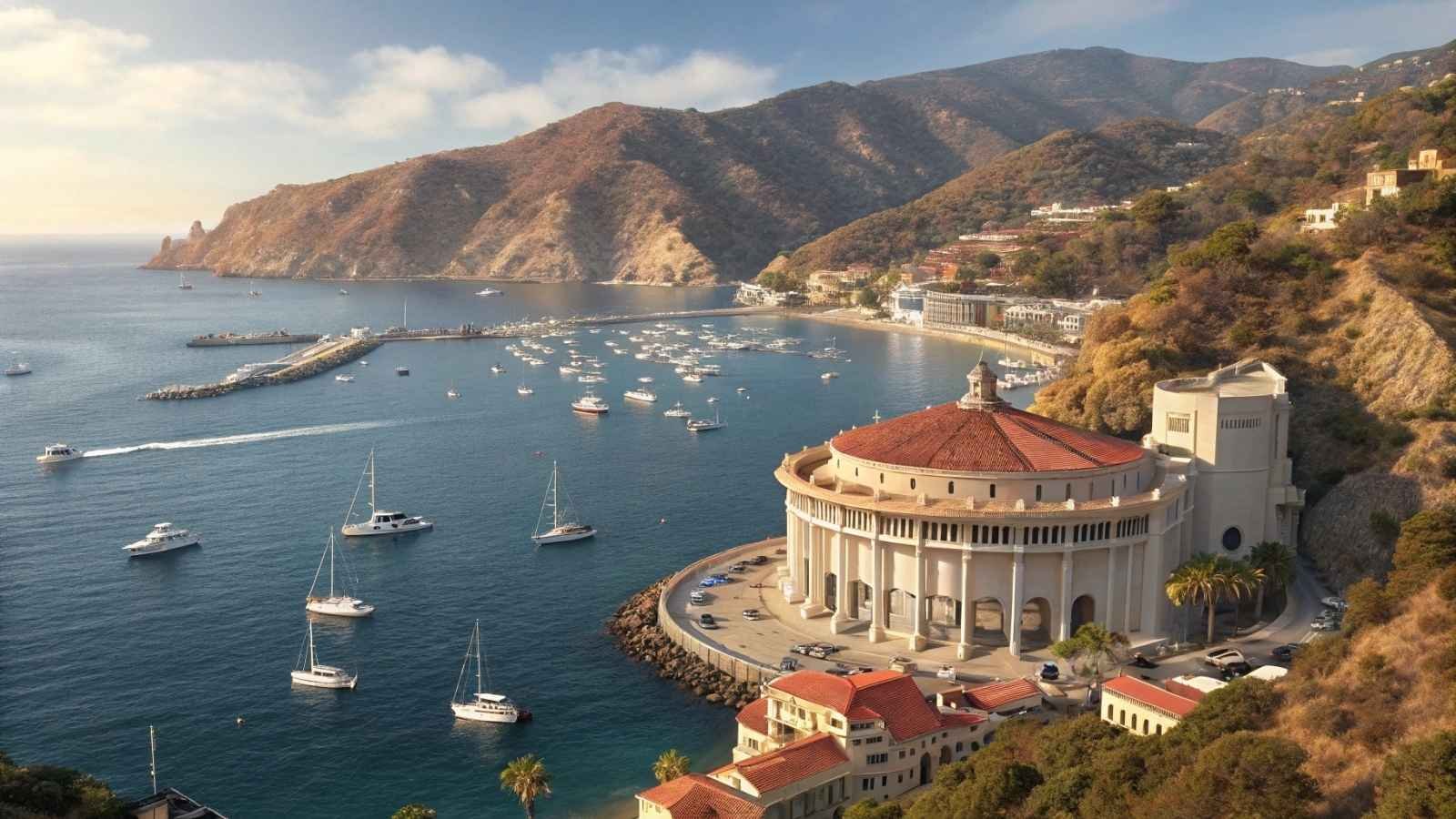
Just 22 miles off the coast of Los Angeles, Catalina Island feels worlds away from the buzz of the city. The island blends Mediterranean charm with California ease, where Avalon’s waterfront promenade is filled with pastel buildings, boutique shops, and harbor views. It’s an easy weekend escape, but once you’re there, you’ll want to linger longer.
What sets Catalina apart is its variety of experiences. The clear waters around the island make for excellent snorkeling and scuba diving—kelp forests and shipwrecks hide just offshore. Inland, rugged hills and scenic trails open up opportunities for hiking and spotting the island’s famous herd of wild bison. Whether you’re after an adventurous getaway or just want to sip cocktails by the marina, Catalina delivers both.
There’s also a timeless, slightly retro vibe to Catalina. From golf cart rentals zipping along narrow streets to historic sites like the Casino building (not actually a casino, but a theater and ballroom), it has a nostalgic charm that’s hard to resist. It feels like a step back to a simpler, more relaxed era of travel.
- Best months to visit: March to October (warmer, calm seas)
- Getting there: Ferry from Los Angeles, Long Beach, or Dana Point
- Top activities: Snorkeling, glass-bottom boat tours, hiking, zip-lining, kayaking
- Good to know: Avalon is lively, but Two Harbors offers a quieter stay
5. Block Island, Rhode Island
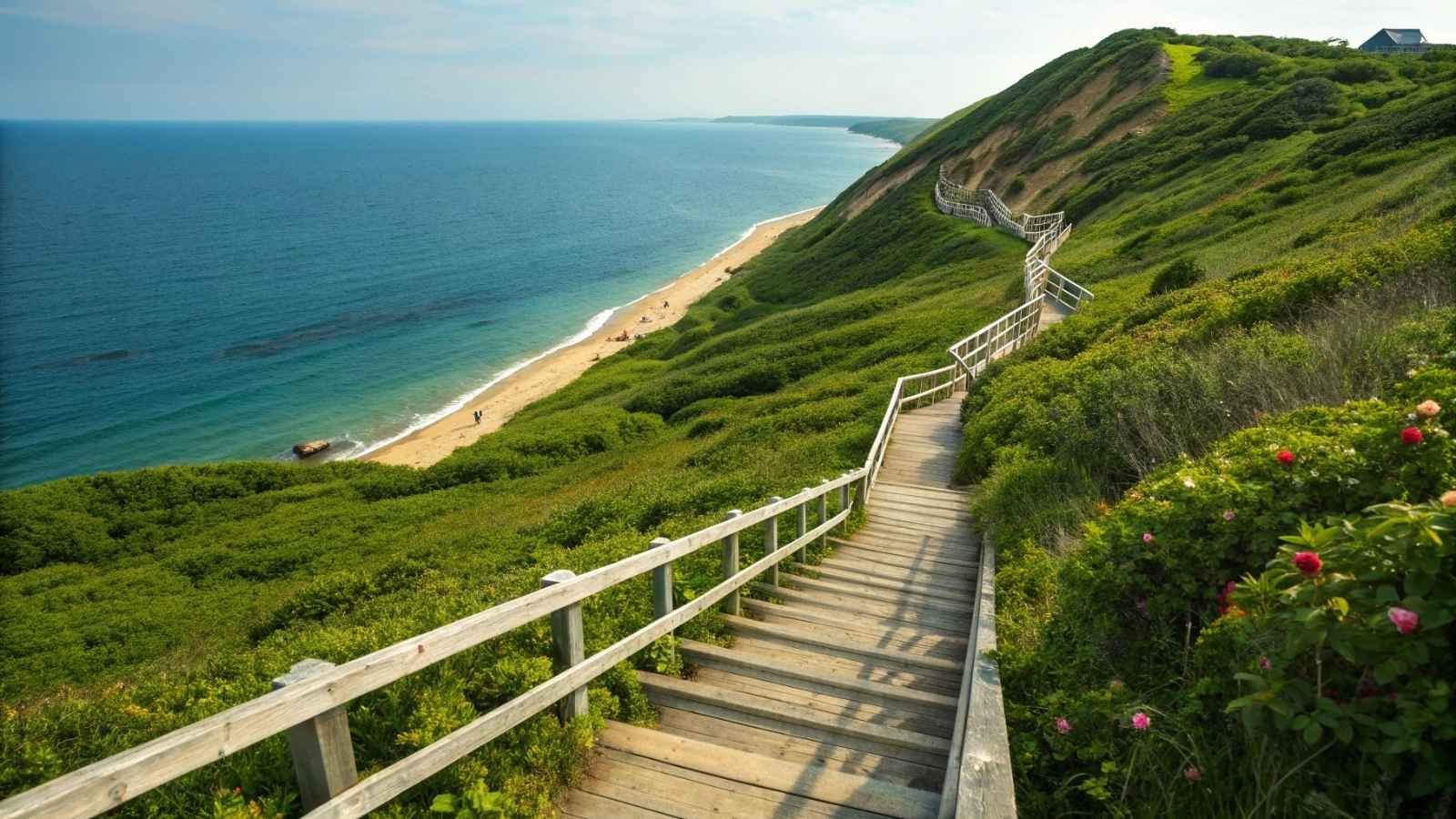
Tucked off the coast of Rhode Island, Block Island is the kind of place where beaches stretch for miles and time seems to slow down. It’s often overshadowed by nearby Martha’s Vineyard and Nantucket, but that’s exactly why it feels so refreshing. Less crowded, more authentic, and filled with New England coastal charm, Block Island has a vibe that’s both laid-back and captivating.
The island is best known for its dramatic cliffs and rolling landscapes. Mohegan Bluffs, in particular, are a must-see—towering clay cliffs that drop dramatically into the ocean, with a staircase leading down to a secluded beach. Beyond the scenery, the island is dotted with historic lighthouses, small inns, and casual seafood shacks serving lobster rolls and clam cakes that taste like summer.
Cycling is a favorite way to explore here. With winding country roads, hidden beaches, and small-town charm, pedaling across the island feels effortless and rewarding. There’s a reason many who visit Block Island come back—it’s simple, genuine, and beautiful in a way that feels far less curated than other East Coast destinations.
- Best months to visit: June to September (sunny, warm, perfect for beaches)
- Getting there: Ferry from Point Judith, Rhode Island (fast ferry from Newport or New London also available)
- Top activities: Exploring Mohegan Bluffs, visiting lighthouses, cycling, beach hopping
- Good to know: Summer is busiest, but early fall offers fewer crowds with great weather
6. Orcas Island, Washington
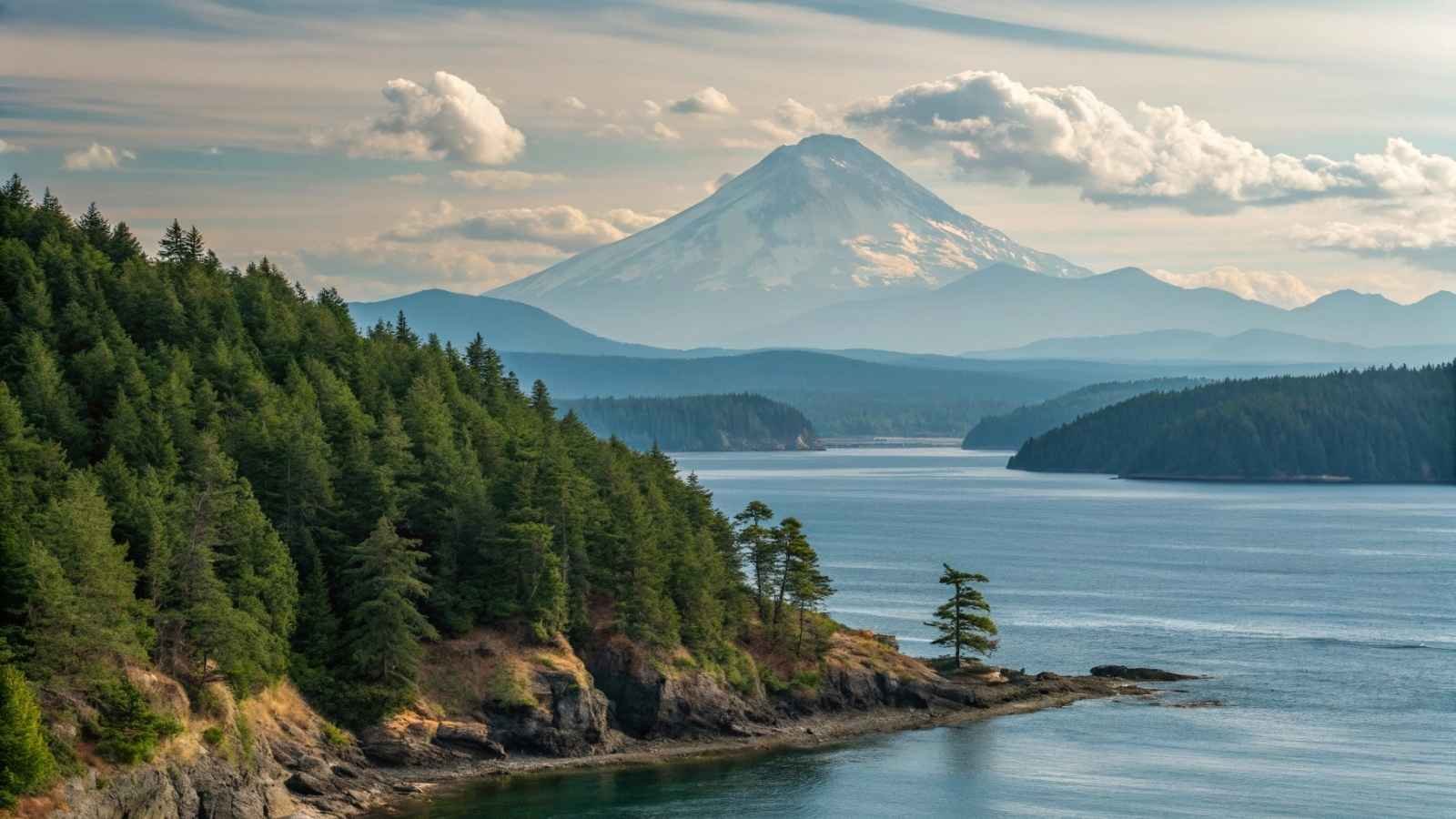
Often called the “Gem of the San Juans,” Orcas Island blends rugged beauty with small-town warmth. The island is shaped like a horseshoe, filled with rolling hills, evergreen forests, and sparkling inlets that make it a paradise for outdoor lovers. The highlight is Moran State Park, with more than 30 miles of hiking trails leading through mossy forests, waterfalls, and to the summit of Mount Constitution—the highest point in the San Juans, offering views stretching into Canada on a clear day.
What makes Orcas feel so special is its blend of nature and community. The village of Eastsound is the heart of the island, lined with art galleries, coffee shops, and local markets where residents and visitors mingle. There’s a strong focus on the arts and local culture, giving the island an intimate, creative atmosphere that feels authentic.
For those who love both adventure and relaxation, Orcas provides the perfect rhythm. You might spend the morning kayaking in Doe Bay, the afternoon hiking, and the evening unwinding in a hot springs soak. It’s peaceful, but never boring—a rare balance that keeps travelers coming back.
- Best months to visit: May to September (warm, ideal for outdoor activities)
- Getting there: Ferry from Anacortes, or seaplane from Seattle
- Top activities: Hiking Mount Constitution, kayaking at Doe Bay, exploring Eastsound, whale-watching
- Good to know: The island has limited public transport—best to bring a car
7. Fire Island, New York
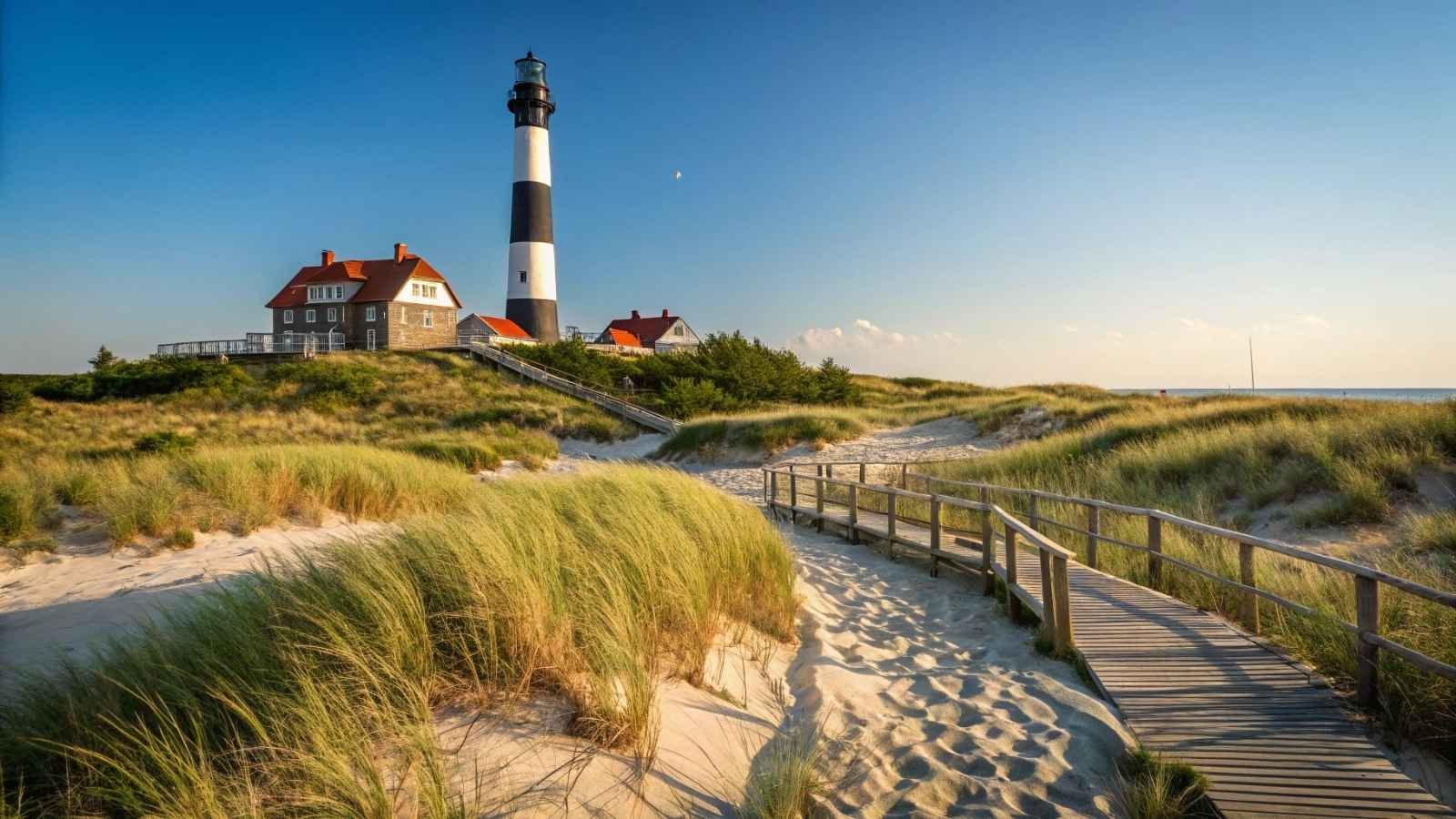
Just a short ferry ride from Long Island, Fire Island feels like an entirely different world compared to the busy energy of New York City. This barrier island is known for its car-free lifestyle—residents and visitors get around on foot, bikes, or water taxis. That alone sets a slower, more refreshing pace for anyone who visits.
Fire Island’s beaches are its crown jewel. Wide, sandy stretches backed by dunes make for perfect days in the sun, and the ocean is ideal for swimming or surfing. Beyond the beach, you’ll find small, tight-knit communities, each with its own character—from lively Ocean Beach with its shops and bars to the quieter, family-friendly communities that dot the shoreline.
There’s also a strong sense of history and nature here. The Fire Island Lighthouse is a popular landmark, and the Sunken Forest, a rare maritime holly forest, feels almost magical to walk through. Between the natural beauty and the quirky, welcoming vibe, Fire Island makes you forget you’re so close to one of the busiest cities in the world.
- Best months to visit: June to September (best beach weather)
- Getting there: Ferry from Bay Shore, Patchogue, or Sayville on Long Island
- Top activities: Relaxing on the beach, visiting Fire Island Lighthouse, exploring the Sunken Forest, bar-hopping in Ocean Beach
- Good to know: Cars aren’t allowed—pack light and embrace walking and biking
8. Molokai, Hawaii
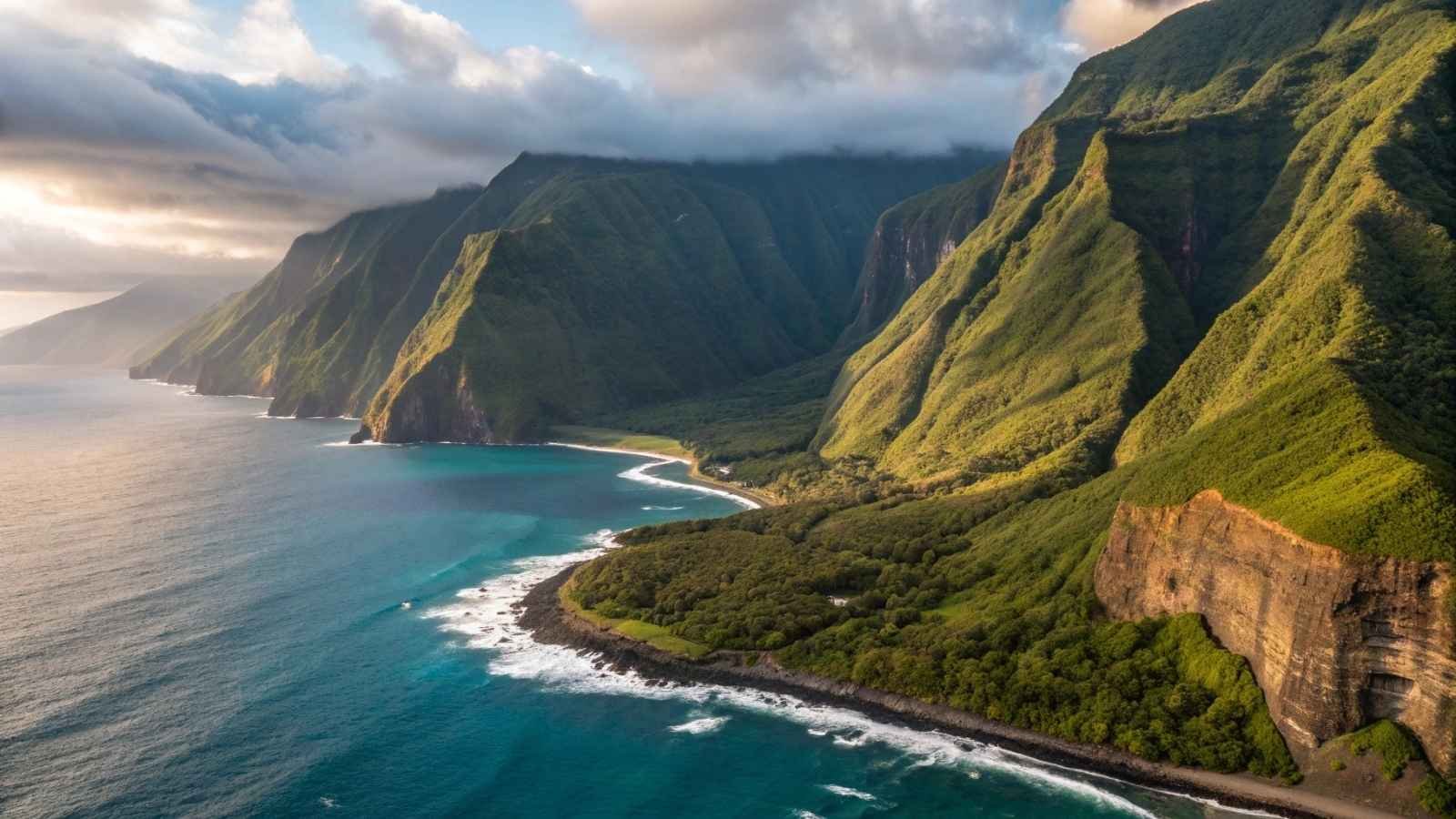
Known as the “Friendly Isle,” Molokai offers a completely different Hawaiian experience—one rooted in tradition, nature, and local culture rather than resorts and tourist crowds. The island feels untouched, with dramatic sea cliffs, secluded beaches, and valleys rich in Hawaiian history. It’s a place where visitors can experience a slower, more authentic side of Hawaii.
Molokai is best known for its Kalaupapa National Historical Park, where towering cliffs drop into the Pacific and history is preserved in a deeply moving way. The island is also home to Halawa Valley, one of Hawaii’s oldest inhabited areas, where guided hikes lead to waterfalls and cultural insights. Instead of high-rise hotels, you’ll find family-run accommodations and warm hospitality that reflects the island’s name.
For travelers seeking connection rather than commercial attractions, Molokai is unmatched. Whether it’s kayaking along the coastline, walking barefoot on miles of empty sand, or learning from locals about Hawaiian traditions, this island offers a sense of grounding that many say they can’t find anywhere else.
- Best months to visit: April to October (drier, calmer seas)
- Getting there: Short flight from Maui or Oahu
- Top activities: Hiking in Halawa Valley, visiting Kalaupapa National Historical Park, snorkeling, and cultural tours
- Good to know: Few tourist amenities—best for travelers seeking authentic experiences
9. Cumberland Island, Georgia
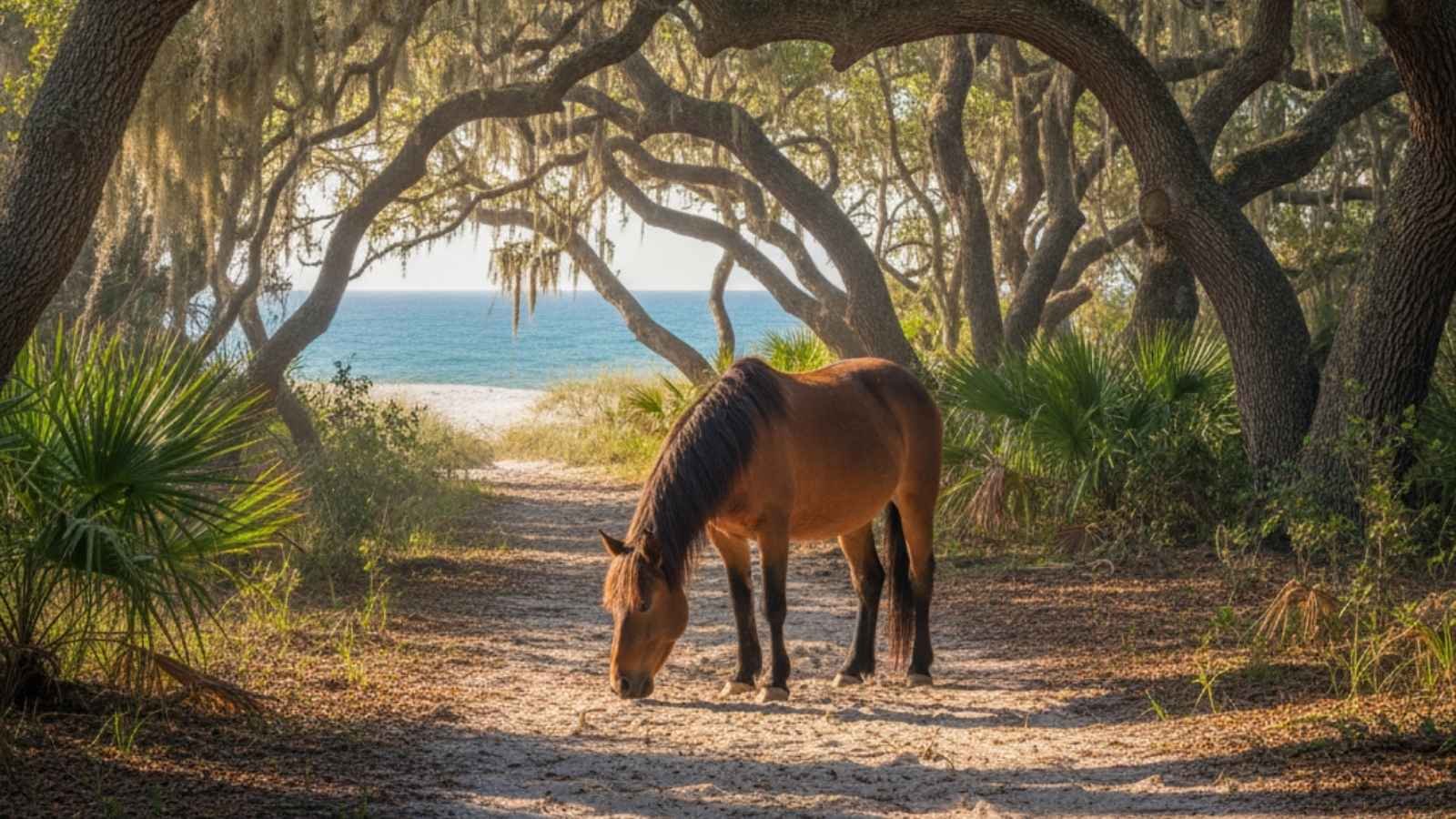
Cumberland Island feels like stepping into a forgotten paradise. The largest barrier island in Georgia, it’s accessible only by ferry, and once you’re there, you’ll find wild horses roaming free across windswept beaches and oak forests draped in Spanish moss. It’s wild, untamed, and breathtakingly beautiful.
The island is rich in history, with remnants of old mansions, ruins, and cemeteries scattered across the landscape. One standout is the Carnegie family’s Dungeness ruins, a haunting yet captivating reminder of the island’s Gilded Age past. Pair that with unspoiled nature—miles of untouched shoreline, marshes filled with birdlife, and quiet forest trails—and it feels like you’ve entered another world.
Because visitor numbers are limited each day, Cumberland never feels crowded. That sense of seclusion is its greatest gift. Whether you’re camping under the stars or just spending the day exploring, the island’s raw beauty leaves a lasting impression that rivals any far-off tropical escape.
- Best months to visit: March to May, September to November (mild weather, fewer mosquitoes)
- Getting there: Ferry from St. Marys, Georgia
- Top activities: Hiking, wildlife spotting (wild horses, armadillos, sea turtles), exploring Dungeness ruins, camping
- Good to know: No shops or restaurants—bring supplies
10. Lopez Island, Washington
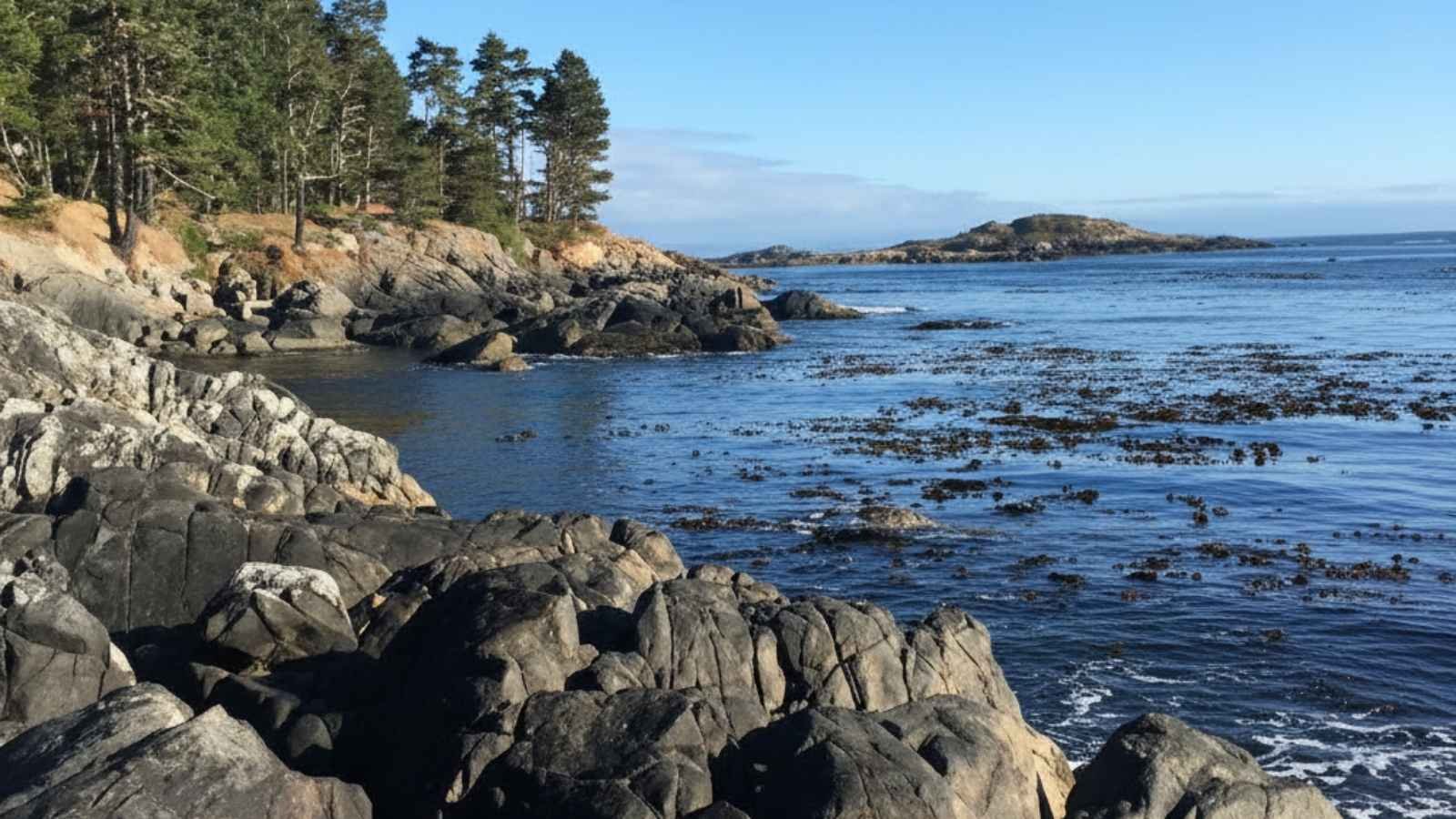
Lopez Island, another gem of the San Juans, is known as the “friendly island” thanks to its warm, welcoming atmosphere. Locals often wave as you drive by, and the pace here is even slower than its neighbors. With rolling farmland, quiet coves, and scenic biking routes, it’s an island that invites you to relax and stay awhile.
Cyclists love Lopez because of its gentle terrain and low-traffic roads. You can easily bike from one side of the island to the other, stopping at farm stands, cafes, and hidden beaches along the way. For those who love kayaking, the calm waters around Spencer Spit State Park are perfect for exploring by boat.
Lopez also has a thriving local food scene. From fresh oysters to farm-to-table restaurants, meals here often feel like part of the experience. Combined with the island’s natural beauty and small-town vibe, Lopez offers a sense of peace and simplicity that’s hard to find elsewhere.
- Best months to visit: May to September (warm, perfect for cycling and kayaking)
- Getting there: Ferry from Anacortes
- Top activities: Cycling, kayaking at Spencer Spit, beachcombing, exploring local markets
- Good to know: Smaller and quieter than Orcas or San Juan Island—perfect for those wanting solitude
11. Vieques, Puerto Rico
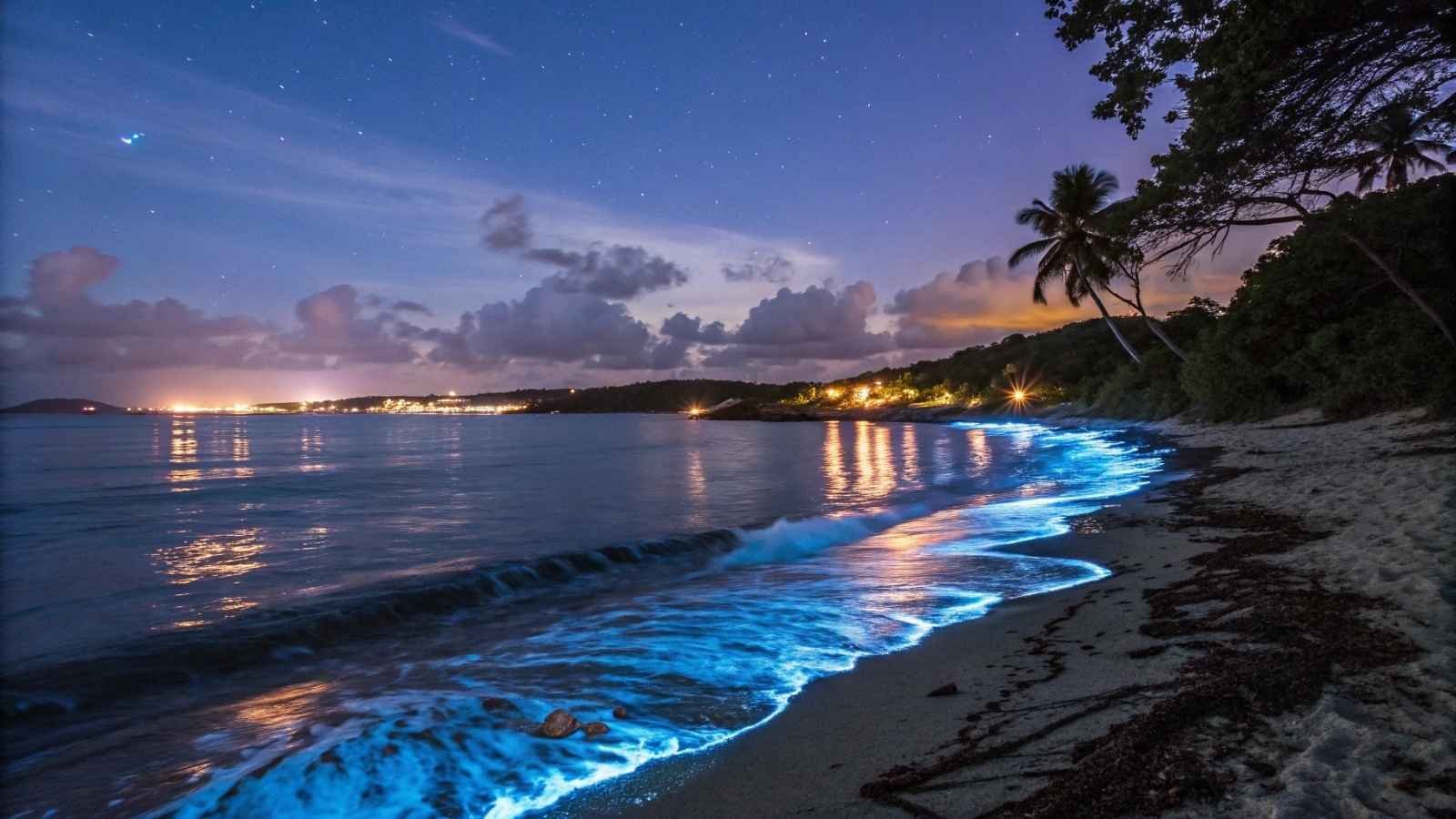
If Culebra feels remote, Vieques is its wilder sibling. Just off Puerto Rico’s eastern coast, this island is known for its bioluminescent bay, where waters glow electric blue under the night sky thanks to millions of microscopic organisms. Few places in the world offer such a dazzling natural show. It’s an unforgettable experience that often becomes the highlight of a trip.
Vieques is also blessed with rugged beaches and wild landscapes. Much of the island is protected as a wildlife refuge, meaning you’ll often stumble upon nearly empty stretches of sand where wild horses wander freely. There’s a raw, untamed beauty to it that makes it feel far from the polished resort vibe of bigger Caribbean destinations.
This island is about adventure with a side of calm. One day you could be snorkeling in turquoise water, the next wandering through old sugar plantation ruins. Vieques gives you the sense that you’re discovering something secret, even though it’s been here all along.
- Best months to visit: December to April (dry season, perfect for the bay tour)
- Getting there: Ferry from Ceiba or a short flight from San Juan
- Top activities: Kayaking in Mosquito Bay, exploring black-sand beaches, snorkeling, and horseback riding
- Good to know: Wild horses roam freely—keep your camera ready
12. Dauphin Island, Alabama
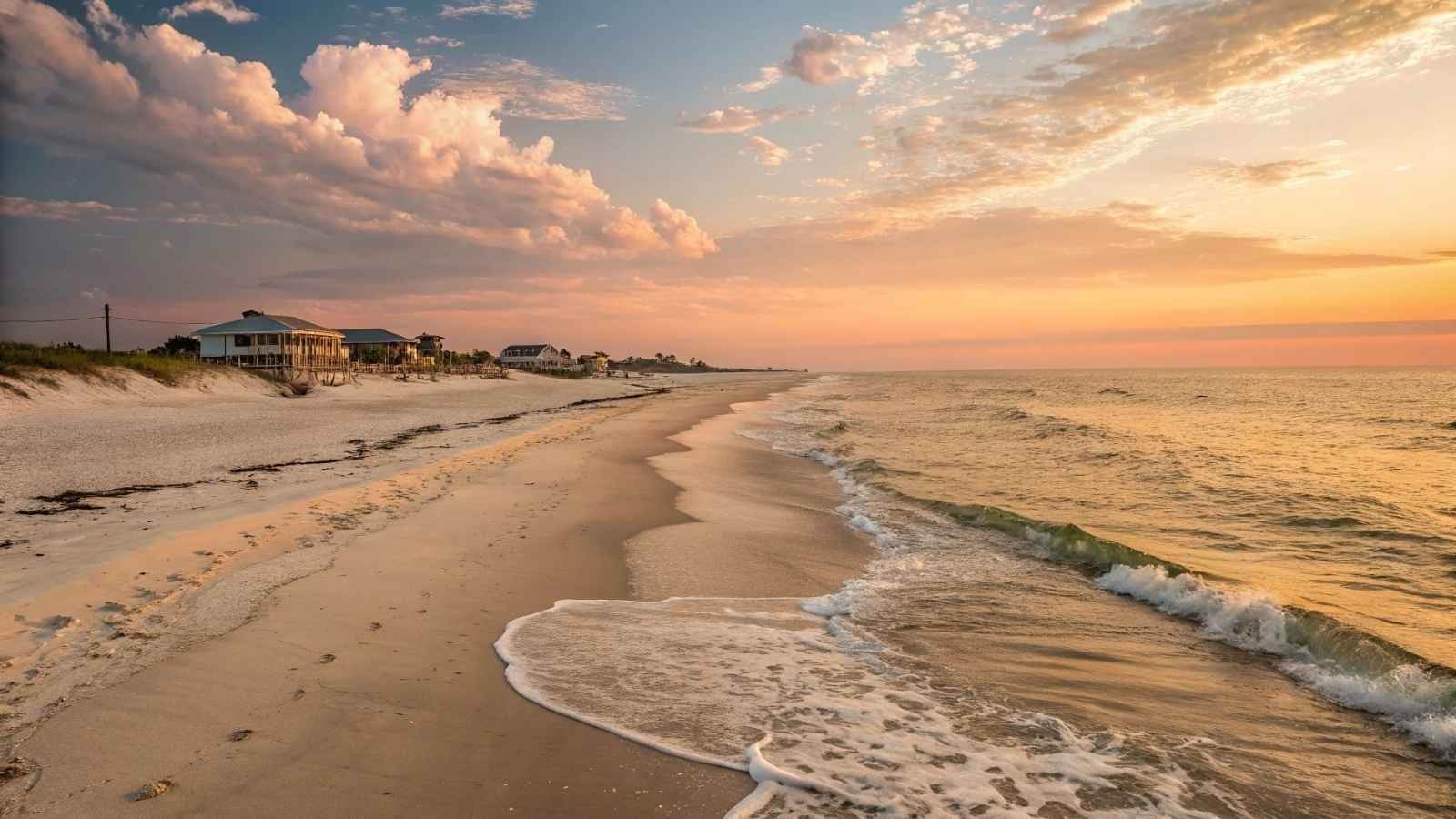
Not many think of Alabama when they think of island getaways, but Dauphin Island proves them wrong. It’s a laid-back barrier island that locals love for its wide-open beaches and no-frills charm. Unlike Florida’s bustling coast, Dauphin Island is about quiet sunsets, small seafood shacks, and long walks along the shoreline without the noise of big resorts.
The island is especially popular with birdwatchers. Located along a major migratory route, it’s home to the Audubon Bird Sanctuary, where trails weave through forests and marshes teeming with wildlife. Add in a historic Civil War fort and a sea lab with an aquarium, and you’ve got more to explore beyond the beach.
What makes Dauphin special is that it feels unpretentious. It’s not polished, but that’s part of its charm—it’s the kind of place where families come year after year because the island feels like theirs. If you’re after low-key paradise, this is it.
- Best months to visit: March to May, September to November (mild, fewer crowds)
- Getting there: Drive across the bridge from mainland Alabama
- Top activities: Birdwatching at Audubon Sanctuary, visiting Fort Gaines, fishing, and kayaking
- Good to know: Quiet nightlife—best for relaxation, not partying
13. Whidbey Island, Washington
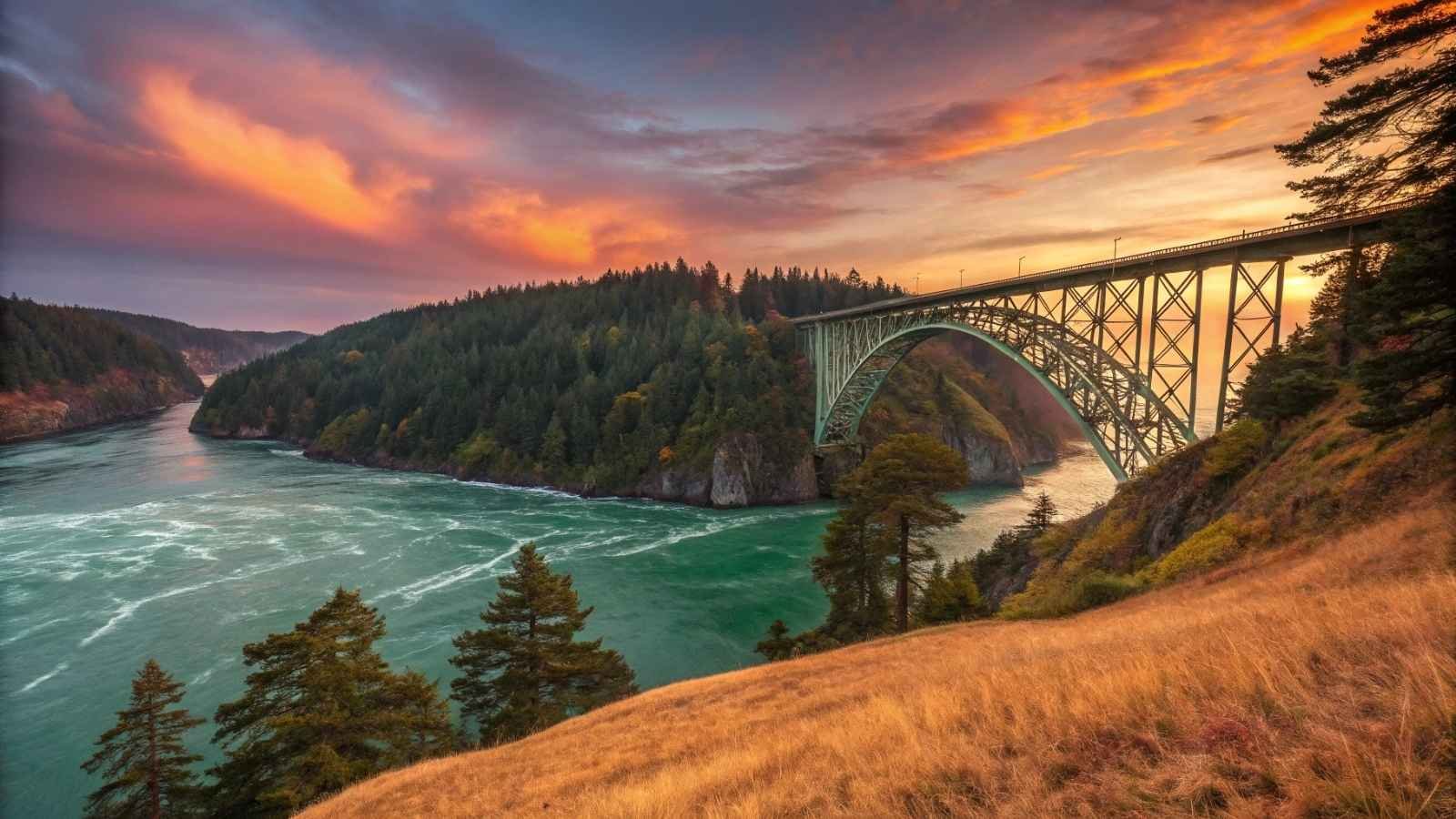
The largest island in Washington State, Whidbey, is where farmland meets forest meets shoreline. Its size gives it variety—one moment you’re in a bustling small town, the next you’re standing on a cliff overlooking the Puget Sound. Deception Pass State Park is the island’s crown jewel, famous for its dramatic bridge, hiking trails, and rugged coastal scenery.
Whidbey is also steeped in history and culture. Towns like Coupeville and Langley are full of antique shops, art galleries, and historic buildings that tell the story of the island’s maritime past. Farmers’ markets and local wineries give it an extra layer of richness, making it just as much a cultural escape as a natural one.
Because it’s close to Seattle, Whidbey makes for an easy weekend getaway. Yet once you’re there, it feels much farther removed. With its mix of outdoor adventure, small-town charm, and local flavors, Whidbey captures the best of Pacific Northwest living in one place.
- Best months to visit: June to September (dry and sunny, rare for Washington)
- Getting there: Drive via Deception Pass Bridge or take a ferry from Mukilteo
- Top activities: Hiking in Deception Pass, wine tasting, exploring Coupeville and Langley, beachcombing
- Good to know: Larger than other San Juan Islands—plan extra time to explore
14. Tangier Island, Virginia
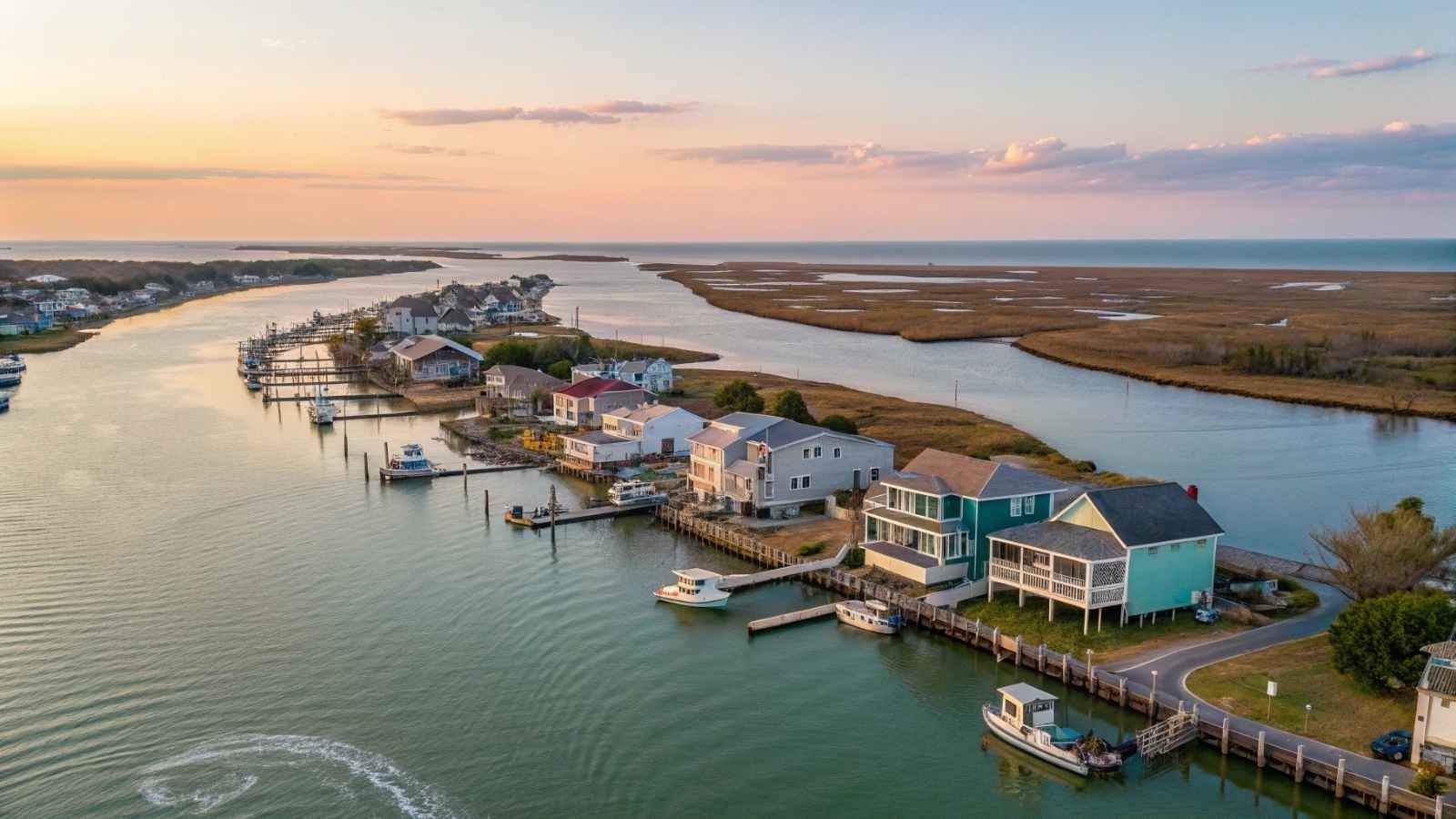
Tangier Island is unlike anywhere else in America. Set in the Chesapeake Bay, it’s a small, tight-knit community where people still speak in a dialect dating back to 17th-century English settlers. Known as the “soft-shell crab capital of the world,” this island thrives on tradition and the waterman’s way of life.
Visiting Tangier feels like stepping into a living time capsule. Streets are narrow, golf carts are the main mode of transport, and locals often greet visitors with warm curiosity. There are no flashy resorts here—just simple inns, family-owned eateries, and a lifestyle shaped entirely by the bay.
The island is also stunning in its simplicity. Marshes and waterways surround the land, offering endless opportunities for birdwatching, fishing, or just taking in the views. It’s the kind of place where the real treasure is the community itself, a reminder of how connected people can be to both land and water.
- Best months to visit: May to October (pleasant weather, crab season)
- Getting there: Ferry from Crisfield, Maryland or Onancock, Virginia
- Top activities: Eating fresh crab, kayaking marshes, exploring the village, birdwatching
- Good to know: The island is shrinking due to erosion—see it while you can






